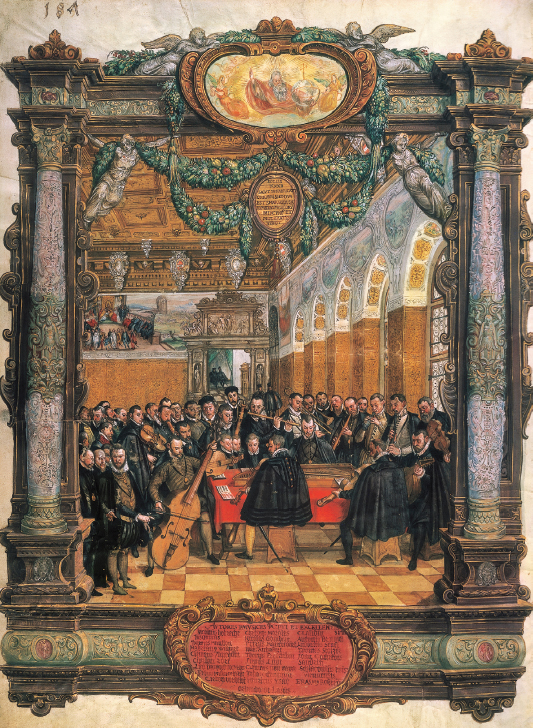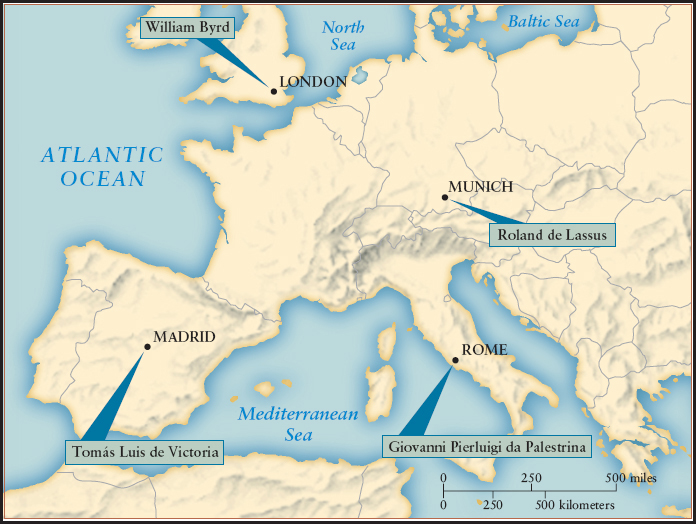The High Renaissance style established by the generation of Josquin Desprez proved remarkably stable. Yet it was also flexible enough that composers were able to do new things with it all the way to the end of the sixteenth century. While its use was clearest in the church music of the time, important new secular genres also made use of this style. The broad appeal of the style is shown by the geographical spread of its four most famous masters, Palestrina, Lassus, Victoria, and Byrd. Giovanni Pierluigi da Palestrina (c. 1525–1594) was born just outside Rome and worked in the Holy City all his life. Roland de Lassus (c. 1532–1594), also known as Orlando di Lasso, was a worldly and much-traveled Netherlander who settled at the court of Munich. His output was enormous. Tomás Luis de Victoria (c. 1548–1611), a Spanish priest, spent many years in Rome working for the Jesuits but ended up in Madrid. William Byrd (1540–1623) was organist of England’s Chapel Royal under Queen Elizabeth I but also a member of the English dissident Catholic minority. He wrote Masses for illegal and highly dangerous services held in secret in barns and attics.

Music at court: instrumentalists of the Bavarian Court Chapel in 1565, under Roland de Lassus. Each man and boy is carefully and solemnly depicted. With this imposing picture (and another, of an equally large group of court singers), the duke showed off the size and distinction of his retinue — a reflection, of course, of his own glory. De Agostini Picture Library/The Bridgeman Art Library.

